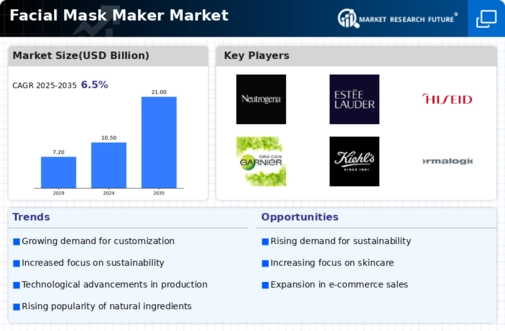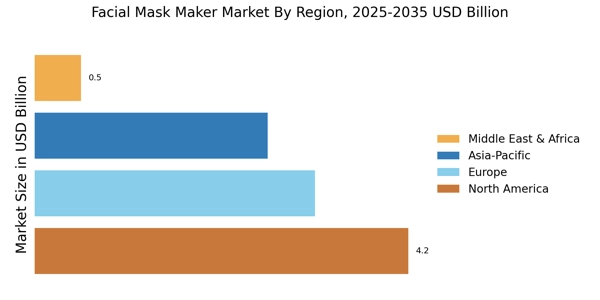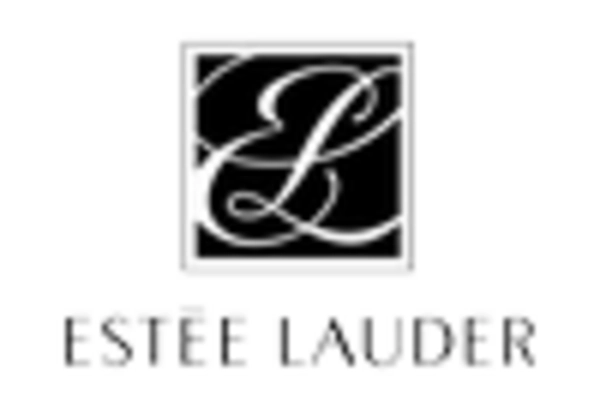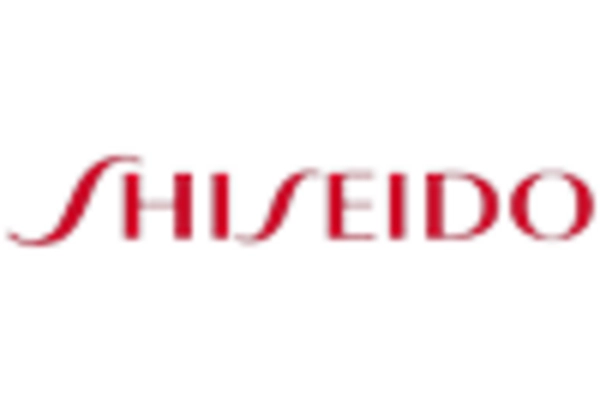Expansion of E-commerce Channels
The Facial Mask Maker Market benefits from the rapid expansion of e-commerce channels, which provide consumers with convenient access to a wide range of facial mask products. Online shopping has become increasingly popular, particularly among younger demographics who prefer the ease of purchasing skincare products from the comfort of their homes. In 2025, e-commerce sales in the skincare sector are expected to account for over 30% of total sales, indicating a shift in consumer purchasing behavior. This trend is further supported by the rise of subscription services that offer personalized facial mask selections, enhancing customer engagement. Consequently, the growth of e-commerce is likely to play a pivotal role in shaping the future of the Facial Mask Maker Market.
Innovations in Product Formulation
The Facial Mask Maker Market is witnessing a wave of innovations in product formulation, as manufacturers strive to meet the evolving needs of consumers. The introduction of advanced ingredients, such as hyaluronic acid and natural extracts, enhances the efficacy of facial masks, appealing to a broader audience. Additionally, the trend towards clean beauty and organic products is prompting brands to develop formulations that are free from harmful chemicals. This shift not only aligns with consumer preferences but also positions companies favorably in a competitive market. As a result, the emphasis on innovative formulations is likely to drive growth within the Facial Mask Maker Market, attracting consumers seeking effective and safe skincare solutions.
Rising Demand for Skincare Products
The Facial Mask Maker Market experiences a notable surge in demand for skincare products, driven by an increasing consumer awareness regarding skin health and wellness. As individuals become more conscious of their skincare routines, the market for facial masks is expanding. In 2025, the facial mask segment is projected to reach a valuation of approximately 5 billion dollars, reflecting a compound annual growth rate of around 8%. This growth is attributed to the rising popularity of self-care practices and the incorporation of facial masks into daily routines. Furthermore, the availability of diverse formulations catering to various skin types enhances consumer interest, thereby propelling the Facial Mask Maker Market forward.
Increased Focus on Self-Care and Wellness
The Facial Mask Maker Market is experiencing a heightened focus on self-care and wellness, as consumers prioritize mental and physical well-being. The practice of using facial masks has evolved into a ritual that promotes relaxation and self-pampering, particularly in the context of busy lifestyles. This trend is reflected in the growing sales of facial masks, with the market projected to grow at a rate of 7% annually. Furthermore, the integration of facial masks into wellness routines, such as spa treatments and home care, underscores their importance in contemporary self-care practices. As consumers continue to seek products that enhance their overall well-being, the Facial Mask Maker Market is poised for sustained growth.
Influence of Social Media and Beauty Trends
The Facial Mask Maker Market is significantly influenced by social media platforms and beauty trends that promote skincare routines. Influencers and beauty enthusiasts frequently showcase facial masks, creating a ripple effect that encourages consumers to adopt these products. The rise of platforms such as Instagram and TikTok has led to a dramatic increase in the visibility of facial masks, with hashtags related to skincare garnering millions of views. This trend not only boosts sales but also fosters a community of users who share their experiences and results. As a result, the Facial Mask Maker Market is likely to see continued growth as social media remains a powerful tool for shaping consumer preferences and driving product innovation.


















Leave a Comment